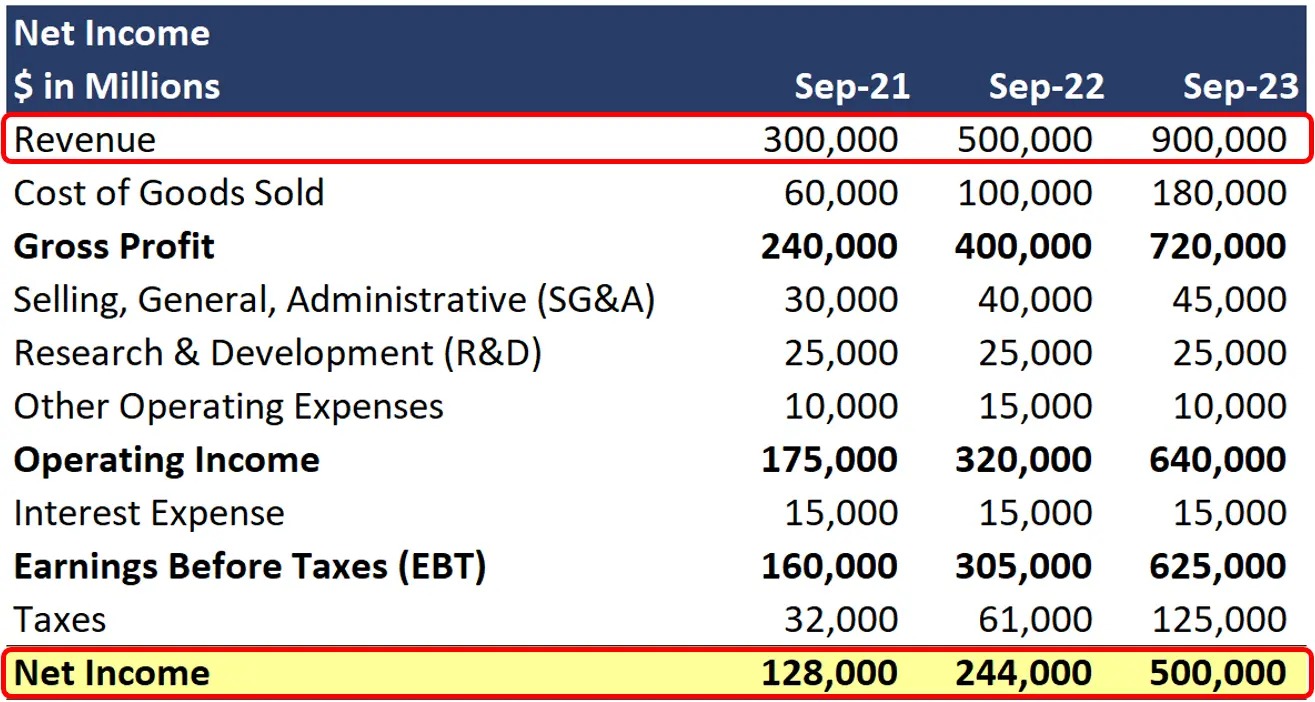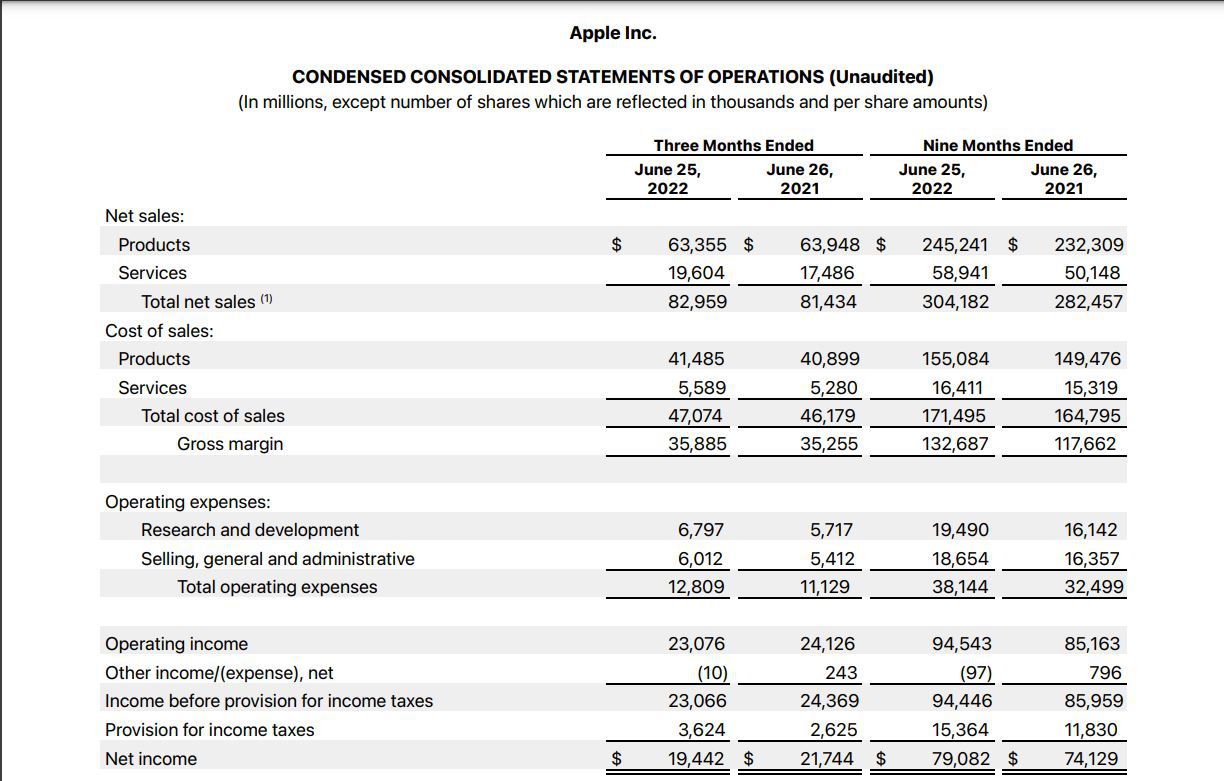

Finance
How To Find Net Operating Working Capital
Published: December 19, 2023
Learn how to find and calculate net operating working capital in finance. Gain valuable insights into managing your business's liquidity and financial health.
(Many of the links in this article redirect to a specific reviewed product. Your purchase of these products through affiliate links helps to generate commission for LiveWell, at no extra cost. Learn more)
Table of Contents
- Introduction
- What is Net Operating Working Capital?
- Importance of Net Operating Working Capital
- Steps to Calculate Net Operating Working Capital
- Step 1: Determine Current Assets
- Step 2: Determine Current Liabilities
- Step 3: Calculate Net Operating Working Capital
- How to Analyze Net Operating Working Capital
- Factors Affecting Net Operating Working Capital
- Tips for Managing Net Operating Working Capital
- Conclusion
Introduction
Net Operating Working Capital is a financial metric that measures the liquidity and operational efficiency of a company. It provides insight into the company’s ability to meet its short-term obligations and support its day-to-day operations. Understanding and effectively managing net operating working capital is crucial for businesses of all sizes, as it directly influences their ability to grow and thrive in the competitive market.
In simple terms, net operating working capital represents the difference between a company’s current assets and its current liabilities. Current assets typically include cash, accounts receivable, inventory, and other short-term assets that can be readily converted into cash within one year. On the other hand, current liabilities encompass accounts payable, short-term debt, and other obligations that are due within one year.
By calculating net operating working capital, businesses can assess their financial health and liquidity. A positive value indicates that a company has enough short-term assets to cover its immediate obligations, providing a buffer for unexpected expenses and facilitating ongoing operations. Conversely, a negative value implies that a company may struggle to meet its short-term obligations, potentially leading to cash flow issues and operational challenges.
Effective management of net operating working capital plays a vital role in optimizing business operations and ensuring sustainable growth. By maintaining an optimal level of net operating working capital, companies can strike a balance between maintaining liquidity and maximizing profitability. This article will delve into the significance of net operating working capital, walk you through the steps to calculate it, provide insights on analyzing the metric, and offer tips for effectively managing and optimizing net operating working capital.
What is Net Operating Working Capital?
Net Operating Working Capital (NOWC) is a financial metric that measures the liquidity and operational efficiency of a company. It represents the difference between a company’s current assets and its current liabilities.
Current assets are assets that can be readily converted into cash within one year, such as cash on hand, accounts receivable, and inventory. These assets are essential for a company’s day-to-day operations and overall financial health.
Current liabilities, on the other hand, encompass the company’s short-term obligations that are due within one year. This can include accounts payable, short-term debt, and other liabilities that require payment in the near future.
By subtracting current liabilities from current assets, we arrive at the net operating working capital. This value indicates the amount of funds a company has available for its day-to-day operations after meeting its immediate obligations.
Net Operating Working Capital is different from traditional working capital because it focuses on the core operations of the business. It excludes cash and short-term investments, as these are not directly related to the operations of the company.
Net Operating Working Capital is an important metric for both investors and management. It provides insight into a company’s ability to handle its short-term obligations, manage cash flow, and support growth and expansion plans.
Positive net operating working capital indicates that a company has more current assets than current liabilities, which implies good liquidity and a healthy financial position. It suggests that the company has enough resources to cover its day-to-day expenses and invest in growth opportunities.
Conversely, negative net operating working capital suggests that a company may be facing liquidity issues. It may struggle to meet its short-term obligations and may need to rely on external financing or debt to fund its operations.
Now that we understand what net operating working capital is, let’s explore why it is important in the next section.
Importance of Net Operating Working Capital
Net Operating Working Capital (NOWC) is a critical financial measurement for businesses as it impacts their ability to sustain operations, meet short-term obligations, and drive growth. Here are some key reasons why net operating working capital is important:
- Liquidity: Net operating working capital provides a clear indication of a company’s liquidity. Positive working capital signifies that a company has enough current assets to cover its immediate liabilities. This ensures that the business can honor its payment obligations, manage unforeseen expenses, and maintain a healthy cash flow. By monitoring working capital, companies can avoid cash flow crunches and make informed decisions regarding funding and investment.
- Operational Efficiency: Net operating working capital is an indicator of a company’s operational efficiency. A positive value suggests that the company is efficiently managing its current assets and liabilities, ensuring a smooth flow of operations. It implies that the company has optimal levels of inventory, effective credit management, and streamlined payment processes. Efficient working capital management can lead to improved profitability and competitiveness.
- Growth Opportunities: Adequate net operating working capital is crucial for capitalizing on growth opportunities. It provides the necessary financial cushion to invest in research and development, expand into new markets, acquire assets, or hire additional staff. By maintaining a positive working capital position, businesses can seize growth opportunities without jeopardizing their financial stability.
- Investor Confidence: Financial stakeholders, such as investors and lenders, closely analyze net operating working capital when evaluating a company’s financial health. A positive working capital position reflects good financial management and stability, which boosts investor confidence. It demonstrates that the company can manage its short-term obligations and is less likely to face financial distress. This can lead to increased access to capital and lower borrowing costs.
- Vendor and Creditor Relationships: Maintaining a healthy net operating working capital can facilitate stronger relationships with vendors and creditors. Suppliers are more likely to extend favorable credit terms to businesses with a positive working capital position, which can lead to discounts and preferential treatment. Additionally, a healthy working capital position allows companies to negotiate better payment terms with creditors, improving overall cash flow management.
Overall, net operating working capital is a crucial financial metric that directly impacts a company’s liquidity, operational efficiency, growth potential, investor perception, and vendor relationships. By actively managing and optimizing their working capital, businesses can enhance their financial stability, competitiveness, and ability to navigate dynamic market conditions.
Steps to Calculate Net Operating Working Capital
Calculating net operating working capital is a relatively straightforward process that involves determining and comparing a company’s current assets and current liabilities. Follow these steps to calculate net operating working capital:
- Step 1: Determine Current Assets: Identify and sum up all the current assets on the company’s balance sheet. This can include cash, accounts receivable, inventory, prepaid expenses, and any other short-term assets that can be readily converted to cash within one year.
- Step 2: Determine Current Liabilities: Identify and sum up all the current liabilities on the company’s balance sheet. This can include accounts payable, short-term loans, accrued expenses, and any other obligations that are due within one year.
- Step 3: Calculate Net Operating Working Capital: Subtract the total current liabilities (step 2) from the total current assets (step 1). The resulting value is the net operating working capital. A positive value indicates that the company has more current assets than current liabilities, while a negative value implies the opposite.
Here’s the formula to calculate net operating working capital visually:
Net Operating Working Capital = Total Current Assets – Total Current Liabilities
It is important to note that the components considered as current assets and current liabilities may vary depending on the industry and specific circumstances of the company. Therefore, it’s crucial to refer to the company’s financial statements or consult with an accounting professional to ensure accurate calculations.
Careful analysis of net operating working capital is vital to understand a company’s financial health and liquidity. This metric helps assess a company’s ability to meet its short-term obligations, manage cash flow, and support its day-to-day operations. It also serves as a basis for making informed decisions about funding, investment, and financial strategies.
Next, we’ll explore how to analyze net operating working capital to gain deeper insights into a company’s financial performance and identify potential areas of improvement.
Step 1: Determine Current Assets
In the calculation of net operating working capital, it is crucial to accurately determine a company’s current assets. Current assets are short-term assets that can be readily converted into cash within one year. These assets provide the necessary resources for a company’s day-to-day operations and can be used to meet short-term obligations.
Here are some common types of current assets that need to be considered:
- Cash: This includes physical cash on hand, as well as cash equivalents such as bank deposits and highly liquid investments.
- Accounts Receivable: These are outstanding payments owed to the company by its customers or clients for goods or services provided on credit. Accounts receivable should be recorded based on their expected collectability.
- Inventory: This refers to the company’s stock of goods or products that are held for sale or are in the production process. It includes raw materials, work-in-progress, and finished goods.
- Prepaid Expenses: These are payments made in advance for goods or services that will be received in the future. Examples include prepaid insurance premiums, prepaid rent, and prepaid subscriptions.
- Short-Term Investments: These are financial instruments that are expected to be converted into cash within one year. Examples include Treasury bills, money market funds, and short-term bonds.
- Other Current Assets: This category can include any other short-term assets that do not fall into the above categories but can be easily converted into cash within one year. Examples may include tax refunds receivable or assets held for sale.
To determine the total current assets, gather the relevant information from the company’s balance sheet. Add up the values of all the individual current assets identified above. The resulting sum will be the total current assets.
It is important to ensure accuracy when determining current assets, as any errors or omissions can lead to incorrect calculations of net operating working capital. Reviewing financial statements, consulting with accountants or finance professionals, and utilizing proper accounting practices are recommended to ensure the accuracy of the current asset figures used in the calculation.
Once the current assets are identified and summed up, you can proceed to Step 2: Determine Current Liabilities to continue calculating the net operating working capital.
Step 2: Determine Current Liabilities
In the calculation of net operating working capital, determining a company’s current liabilities is essential to accurately assess its financial position. Current liabilities are short-term obligations that are due within one year and must be settled using current assets or through cash flow generated from business operations.
Here are some common types of current liabilities that need to be considered:
- Accounts Payable: These are the amounts owed by the company to its suppliers or vendors for goods or services received on credit. It represents the company’s short-term obligations to pay for its purchases.
- Short-Term Loans: These are any loans or borrowings that are due for repayment within one year. This includes lines of credit, working capital loans, or other short-term financing arrangements.
- Accrued Expenses: These are expenses that have been incurred but not yet paid. They can include salaries and wages payable, interest payable, rent payable, utilities payable, and any other amounts owed but not yet settled.
- Taxes Payable: This represents the amount of taxes that the company owes to tax authorities, such as income taxes, sales taxes, or payroll taxes. These are typically short-term liabilities payable within one year.
- Dividends Payable: If the company has declared dividends to its shareholders but has not yet paid them, this amount will be considered a current liability until the dividends are distributed.
- Other Current Liabilities: This category encompasses any other short-term obligations that are due within one year and do not fall into the above categories. Examples may include customer deposits, unearned revenue, or short-term portions of long-term debt.
To determine the total current liabilities, review the company’s balance sheet and identify the values associated with each of the current liabilities listed above. Add up these values to calculate the total current liabilities.
Accurate determination of current liabilities is crucial for calculating net operating working capital correctly. Errors or omissions in identifying and summing up current liabilities can lead to misleading results and inaccurate financial assessments. It is advisable to consult financial statements, work with accounting professionals, and adhere to proper accounting practices to ensure the accuracy of current liability figures used in the calculation.
With the total current liabilities determined, you can proceed to Step 3: Calculate Net Operating Working Capital to complete the calculation process and gain valuable insights into the company’s liquidity and operational efficiency.
Step 3: Calculate Net Operating Working Capital
Now that you have determined the total current assets (Step 1) and total current liabilities (Step 2), you can proceed to calculate the net operating working capital. This calculation will provide valuable insight into a company’s liquidity and its ability to meet its short-term obligations.
The formula for calculating net operating working capital is simple:
Net Operating Working Capital = Total Current Assets – Total Current Liabilities
Subtract the total current liabilities from the total current assets to arrive at the net operating working capital value. A positive net operating working capital indicates that the company has more current assets than current liabilities. This suggests that the business has sufficient resources to cover its short-term obligations and fund its day-to-day operations.
Alternatively, a negative net operating working capital indicates that the company has more current liabilities than current assets. This can imply a potential liquidity challenge, as the business might struggle to meet its short-term obligations without additional financing.
Understanding the net operating working capital value is crucial for assessing a company’s financial health and stability. It can help identify areas of improvement or potential risks that need to be addressed by management. A strong and positive net operating working capital position indicates good liquidity and operational efficiency, while a negative value suggests a need for immediate attention to ensure adequate cash flow and fulfill obligations.
It is important to note that the interpretation of net operating working capital values can vary across industries and depend on the specific circumstances of a company. Comparing a company’s net operating working capital to industry benchmarks or historical data can provide additional context and help assess its financial position more accurately.
By carefully calculating and analyzing net operating working capital, businesses can make informed decisions about their short-term financial strategies, investments, and day-to-day operations. Effective management of net operating working capital is crucial for maintaining financial stability, optimizing cash flow, and supporting sustainable growth.
Now that you have calculated the net operating working capital, we will explore how to analyze and gain insights from this financial metric in the next section.
How to Analyze Net Operating Working Capital
Net Operating Working Capital (NOWC) provides valuable insights into a company’s financial health and operational efficiency. Analyzing this metric can help identify trends, assess liquidity, and make informed decisions regarding short-term financial strategies. Here are some key considerations for analyzing net operating working capital:
- Comparison to Industry Benchmarks: One way to assess net operating working capital is by comparing it to industry benchmarks. This helps determine whether the company’s working capital position is aligning with industry norms or if it deviates significantly. Understanding the industry standard can provide insights into the company’s relative financial health compared to its peers.
- Trend Analysis: Tracking net operating working capital over time can reveal trends and patterns. Assessing changes in the metric can help identify improvements or deterioration in a company’s liquidity position. For example, a consistent positive trend in net operating working capital may indicate strong financial management, while a consistent negative trend may raise concerns about liquidity management.
- Comparing to Historical Data: Analyzing net operating working capital in relation to the company’s historical data can highlight long-term improvements or weaknesses. By comparing current measurements to past periods, management can gauge the effectiveness of their working capital management strategies and identify areas for improvement.
- Ratio Analysis: It can be helpful to calculate various ratios using net operating working capital, such as the NOWC ratio, which measures net operating working capital as a percentage of sales. This ratio provides insights into the efficiency of working capital utilization and how effectively the company converts its sales into working capital.
- Seasonal and Cyclical Considerations: In certain industries, net operating working capital may be subject to seasonal or cyclical fluctuations. Businesses experiencing seasonal demand or cyclical patterns need to carefully manage their working capital to address fluctuations in operations and cash flow.
- Comparing to Competitors: Benchmarking net operating working capital against competitors can offer insight into relative performance. Analyzing how the company’s working capital position compares to other players in the industry can identify areas where improvements can be made to enhance competitiveness and financial stability.
When analyzing net operating working capital, it is essential to consider the specific dynamics of the industry, the company’s business model, and its unique circumstances. Additionally, it is crucial to interpret net operating working capital in conjunction with other financial metrics and indicators to gain a comprehensive understanding of the company’s financial performance.
By consistently monitoring and analyzing net operating working capital, businesses can make informed decisions regarding liquidity management, financial strategies, and operational efficiency. This analysis helps ensure the company remains financially stable, optimizes cash flow, and positions itself for long-term growth and success.
Factors Affecting Net Operating Working Capital
Net Operating Working Capital (NOWC) is influenced by various factors that impact a company’s liquidity and operational efficiency. Understanding these factors is crucial for effectively managing working capital and ensuring smooth business operations. Here are some key factors that can affect net operating working capital:
- Industry Dynamics: Different industries have unique working capital requirements. For example, companies in manufacturing or retail sectors often have higher inventory levels, which can tie up a significant portion of working capital. Understanding the industry’s typical working capital patterns and requirements is essential for managing net operating working capital effectively.
- Business Growth: Rapid business growth can strain working capital resources. As sales and operations expand, companies may face increased demand for inventory, increased accounts receivable, and the need to invest in additional resources. It is crucial to anticipate and manage the impact of growth on net operating working capital to prevent liquidity constraints.
- Seasonality and Cyclicality: Companies operating in industries with seasonal or cyclical demand patterns may experience fluctuations in net operating working capital. For example, retailers often experience higher working capital needs during holiday seasons. Managing the seasonal or cyclical nature of the business and aligning working capital resources accordingly is important to maintain liquidity throughout the year.
- Business Model: The business model of a company influences its working capital requirements. For example, a company with a high degree of customer credit sales will have higher accounts receivable, impacting net operating working capital. Understanding the specific drivers of working capital in the business model is essential for efficient management.
- Supplier and Customer Relationships: The payment terms negotiated with suppliers, as well as the credit terms offered to customers, can affect net operating working capital. Longer credit terms from suppliers can help extend payment obligations and free up working capital. Similarly, efficient management of credit sales, including timely collections, can improve cash flow and working capital position.
- Inventory Management: Effective inventory management is critical to optimizing net operating working capital. Excess inventory ties up working capital, while insufficient inventory can lead to stockouts and missed sales opportunities. Striking the right balance and implementing inventory control strategies, such as just-in-time inventory, can help improve working capital efficiency.
These are just a few of the many factors that can impact net operating working capital. Each company will have its own unique set of circumstances and considerations. It is crucial for businesses to continually assess and adapt their working capital management strategies to address the specific factors influencing net operating working capital in their industry and business environment.
By proactively managing these factors and implementing effective working capital management practices, companies can optimize their liquidity, improve cash flow, and position themselves for sustainable growth and success.
Tips for Managing Net Operating Working Capital
Effective management of net operating working capital is crucial for maintaining financial stability, optimizing cash flow, and supporting business growth. Here are some key tips for managing net operating working capital:
- Streamline Accounts Receivable: Implement efficient credit and collection policies to reduce the average collection period and improve cash flow. Regularly assess creditworthiness of customers, set clear payment terms, and promptly follow up on overdue invoices to minimize outstanding receivables.
- Optimize Inventory: Conduct regular inventory management assessments to ensure optimal levels. Identify slow-moving or obsolete inventory and implement strategies such as just-in-time inventory practices, supplier partnerships, and demand forecasting to minimize carrying costs and free up cash.
- Manage Accounts Payable: Negotiate favorable payment terms with suppliers to extend payment obligations and improve cash flow. Take advantage of early payment discounts, but ensure they are beneficial compared to the liquidity benefits of keeping cash longer.
- Improve Working Capital Cycle: Analyze and streamline the business processes involved in the working capital cycle – including procurement, production, sales, and collections – to reduce the time it takes to convert sales into cash. Identify and eliminate bottlenecks or inefficiencies that may prolong the cycle and tie up working capital.
- Optimize Cash Conversion Cycle: The cash conversion cycle measures the time it takes for cash invested in inventory and account receivables to be converted back to cash. By reducing this cycle through efficient inventory management, credit policies, and collections processes, businesses can improve their net operating working capital position and generate more cash.
- Control Expenses: Evaluate and control operating expenses to ensure efficient utilization of resources. Identify areas where cost reductions can be made without negatively impacting operations or customer service. Efficient expense management can help preserve cash and improve net operating working capital.
- Monitor and Forecast Cash Flow: Implement robust cash flow monitoring systems to accurately forecast cash inflows and outflows. Regularly review cash flow projections to anticipate potential shortfalls or surpluses. Having a clear understanding of future cash flow helps in effective working capital management.
- Use Technology and Automation: Leverage technology and automation tools to streamline and improve activities related to working capital management. Implementing cloud-based accounting systems, automated invoicing and payment processing, and inventory management software can enhance efficiency, accuracy, and visibility into working capital metrics.
- Regularly Review and Adjust: Continuously monitor and review financial data related to net operating working capital. Regularly assess the effectiveness of working capital management strategies and make necessary adjustments to align with changing business dynamics and goals.
Implementing these tips and adopting a proactive approach to net operating working capital management can result in improved financial stability, increased liquidity, and enhanced operational efficiency. By effectively managing net operating working capital, businesses can optimize cash flow, support growth initiatives, and strengthen their overall financial position.
Conclusion
Net Operating Working Capital (NOWC) is a crucial financial metric that measures a company’s liquidity and operational efficiency. It provides valuable insights into a company’s ability to meet short-term obligations, manage cash flow, and support day-to-day operations. Effectively managing net operating working capital is essential for maintaining financial stability, optimizing cash flow, and positioning the business for long-term success.
In this article, we have explored the concept of net operating working capital and its significance in financial management. We discussed the steps to calculate net operating working capital, including determining current assets and current liabilities. Moreover, we examined the importance of analyzing net operating working capital and the factors that can impact it, such as industry dynamics, business growth, and seasonal factors.
We also provided tips for effectively managing net operating working capital, emphasizing the importance of streamlining accounts receivable, optimizing inventory, managing accounts payable, and controlling expenses. Additionally, we highlighted the benefits of monitoring and forecasting cash flow, leveraging technology and automation, and regularly reviewing and adjusting working capital management strategies.
By implementing these tips and adopting a proactive approach to net operating working capital management, businesses can improve financial stability, ensure adequate liquidity, and support sustainable growth. Careful management of working capital allows companies to navigate dynamic market conditions, seize opportunities, and mitigate risks.
In conclusion, net operating working capital serves as a vital indicator of a company’s financial health and operational efficiency. By understanding and effectively managing this metric, businesses can enhance their liquidity, optimize cash flow, and position themselves for long-term success in today’s competitive landscape.














